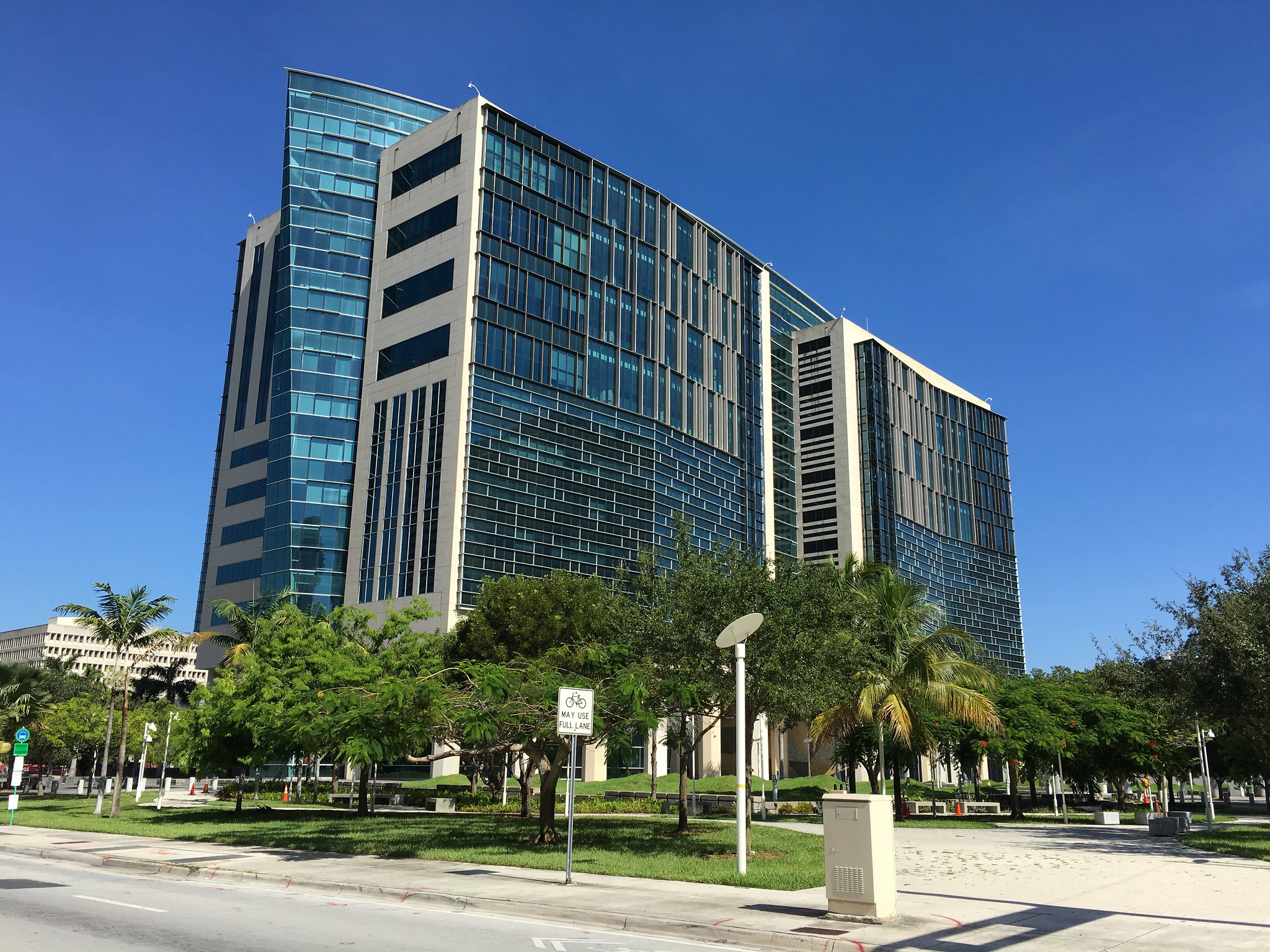Conflicting Rulings in Cases Brought Under the Helms-Burton Act
Significant rulings on two doctrines—standing and scienter—show that Title III’s scope will remain unsettled for a while.

Published by The Lawfare Institute
in Cooperation With

Back in June, we reported that suits brought under Title III of the Helms-Burton Act had suffered their first significant setback, but that many open questions remained. In the last two months, courts have now handed down significant rulings on the application of two other doctrines—standing and scienter—to Helms-Burton suits. Generalizing from these rulings is tricky, as they point in different directions. While some impose stricter standards for standing and scienter, others set out more relaxed requirements. But the decisions have clarified one thing: Title III’s scope will remain unsettled for a while.
Readers will remember that Congress passed the Helms-Burton Act in 1996 to put pressure on the communist government in Cuba. Title III of the act was designed to scare investors away from the island by allowing U.S. nationals to sue any persons or entities who “trafficked” in property confiscated by the Castro regime. Title III defines “trafficked” expansively, to include not only engaging “in a commercial activity using or otherwise benefiting from confiscated property” but also profiting from any trafficking done by anyone else. Title III also provides for treble damages under certain circumstances.
Presidents Clinton, Bush and Obama all suspended Title III’s operation from 1996 to 2017. When one of us (John Bellinger) served as legal adviser to the National Security Council and the State Department, the Bush Administration considered whether to activate Title III but concluded that the ensuing litigation would cause friction with allies and have potentially unintended consequences. However, on May 2, 2019, the Trump Administration permitted Title III to go into effect for the first time ever. Since then, roughly 30 suits have been filed, mostly against U.S. companies rather than the foreign entities that Congress seemingly intended Title III to target.
Several defendants have argued strenuously that the Title III cases against them must be dismissed either because the plaintiffs do not have standing, or because the plaintiffs had failed to properly allege that the defendant companies had the necessary scienter or mental state. Courts are now starting to address those arguments, and over the last month and a half they have offered dueling sets of rulings that ultimately raise more questions than they answer.
Standing
One of the essential ingredients of federal court jurisdiction is standing, or the idea that a plaintiff must have a real “Case[]” or “Controvers[y]” within the meaning of the U.S. Constitution that can permit a federal court to adjudicate her claims. Standing is absent unless plaintiffs can demonstrate what the Supreme Court has called an “injury in fact”—“an invasion of a legally protected interest” that is both “concrete and particularized” and “actual or imminent, not conjectural or hypothetical.”
One of the open questions in Title III suits has been whether plaintiffs have standing to sue companies and individuals who allegedly traffic in their property. Everyone agrees that plaintiffs suffered an injury in fact when the Castro regime first confiscated their properties. But whether they also suffered an injury from subsequent trafficking is less clear. Does a former owner really suffer a “concrete” injury when someone merely “benefits” or “profits” from her confiscated property?
Three district courts have recently ruled on that question—and they gave conflicting answers. The first case was brought by Robert Glen, who alleges that he holds a claim to two beachfront properties located in one of Cuba’s most popular beach towns, Varadero. After the Cuban revolution, those properties were allegedly confiscated from Glen’s family and developed into four separate beachfront resorts. Glen did not sue any of those resorts, however. He instead brought a series of Title III suits against U.S. companies, including American Airlines. He claimed that American Airlines had “trafficked” in his confiscated property by facilitating the booking of rooms and other services at the four resorts through an online portal (“Book AA Hotels”), as well as by profiting from those resorts’ own trafficking.
On Aug. 3, a district court in Texas dismissed Glen’s suit on several independent grounds, including that he had not shown an “injury in fact.” Glen had argued that he was injured by American Airlines’s failure to compensate him whenever it earned commissions from bookings made at the four resorts. But the court rejected that explanation, noting that American Airlines had deprived Glen neither of his confiscated property nor of the profits he might have made off that property. Instead, the airline company had “merely [done] business” with the resorts. Even if Glen had owned and operated the resorts, he would not have been entitled to any of the commissions that American Airlines might have made from facilitating the booking of rooms or other services. So the court could not see how American Airlines, even if it was trafficking in Glen’s properties under the definition of the Helms-Burton Act, had actually injured Glen. Finally, the court rejected the idea that American Airlines’s mere potential violation of Title III was enough, on its own, to constitute an injury to Glen.
Just two weeks later, however, a district court in Florida went the other way. Plaintiff Iglesias Cueto alleged in her initial complaint that the Cuban Government confiscated Conac Cueto, C.I.A., a cognac company founded by her father, and then folded its physical and intellectual property into the Cuban Government Rum Company, where those assets were eventually used in the production of liquor under the Havana Club brand. Cueto sued the French liquor company Pernod Ricard, who allegedly partnered with the Castro regime to distribute the Havana Club brand.
Pernod raised the issue of standing, but the district court sided with Cueto and another family member who had been subsequently added to the complaint. The court reasoned that the Cuetos’ injury was “the proceeds obtained by a third party, in this case Pernod, who allegedly... trafficked in [the] confiscated property.” Put differently, the Cuetos’ standing was “predicated on their claim that they hold an interest in the confiscated property that was the subject of dealings between [Pernod] and the Cuban Government.”
Although the Cueto court’s analysis is less than clear, it seems to have essentially held that standing existed simply because the Cuetos had alleged that Pernod trafficked in their confiscated property. But that ruling dodges the hard question—how, exactly, do “the proceeds obtained by . . . Pernod” concretely injure the Cuetos? Is standing automatically present whenever “trafficking” is properly alleged?
On Sept. 1, another district court in Florida offered a possible answer to those questions. Havana Docks Corp. had sued Norwegian Cruise Line Holdings, Ltd., under Title III for allowing its cruise ships to tie up at an allegedly confiscated dock. Norwegian challenged Havana Docks’s standing, but the court held that Havana Docks had successfully demonstrated an injury in fact. It explained that, pursuant to Title III, “trafficking in confiscated property is an invasion of a legally protected interest—i.e. a statutorily constructed property interest in the Subject Property, which conveys a right to prevent third-party use of the same.” The court then reasoned that, “[a]lthough a statutorily-constructed right may be insufficient to convey standing on its own,” it was sufficient where Congress created that right to address a concrete underlying harm. Here, the court noted, Congress created Title III to address the wrongful confiscation of property and the subsequent exploitation of that property by foreign investors at the expense of rightful owners. Accordingly, the “concrete underlying harm” in the case was the cruise line’s infringement on Havana Docks’s property interest.
On one level, it’s not easy to square the different outcomes in these three cases. Glen held that the plaintiff lacked standing because trafficking on its own did not injure the owner of the confiscated property; Cueto (seemingly) held the opposite. Havana Docks distinguished Glen by arguing that Glen had admitted that neither the confiscation of the properties nor the resorts’ operations constituted injuries in fact. But Glen’s concessions are irrelevant to the question of standing, which is jurisdictional and must therefore be independently assessed by the court.
One possible way to reconcile all three cases, however, is to look more closely at the relationship between the defendant and the confiscated property in each. Cueto and Havana Docks both involved defendants who allegedly used plaintiffs’ property directly—Pernod, by using Conac Cueto’s assets in its distribution network; and Norwegian, by docking its cruise ships at Havana Docks’s property. Glen, by contrast, involved a defendant one degree removed from the confiscated property—American Airlines did not interact directly with Glen’s confiscated land, but only did business with resorts that had been built on top of that land. So although the resorts themselves were directly infringing on Glen’s confiscated property, American Airlines was not.
This distinction may not matter for Title III itself, which defines “trafficking” to cover both direct and indirect interactions with confiscated property, but it arguably could make the difference between a constitutional injury in fact and no injury at all. Havana Docks stressed that the plaintiff’s injury came from the infringement on its property right (including the right to exclude others from using that property). Even accepting that theory—which veers dangerously close to suggesting that Congress can create standing in all cases—it’s not clear in Glen how American Airlines infringed Glen’s property rights by simply doing business with resorts who were (arguably) infringing Glen’s property rights themselves.
If that interpretation is correct, it would go a long way toward short-circuiting some of the more strained claims by plaintiffs that defendants have engaged in “trafficking” simply by providing room-booking services or processing credit card transactions. But it’s still unclear whether other courts will rule accordingly. Glen has filed a notice of appeal, so at the very least, we should eventually get a ruling on the issue from the 5th Circuit.
Scienter
One other doctrine that has been subject to conflicting rulings in Title III cases is that of scienter. Scienter refers to the mental state someone must have before they can be held legally responsible for their actions. Scienter requirements vary across statutes, and can even differ across the elements of a single statutory provision.
Title III provides that a person “traffics” in confiscated property if that person “knowingly and intentionally” engages in certain actions like buying and selling a confiscated property. “[K]nowingly” is defined elsewhere in the act as “with knowledge or having reason to know.” In the last two months, courts have split about what it means for a defendant to act “knowingly and intentionally” in this context.
Glen v. American Airlines once again provided the first cut at an answer. Glen had argued that “knowingly and intentionally” modified only the actions that constitute trafficking, so that a defendant need only know and intend to, say, “sell” or “buy” a property in order to be held liable for trafficking. But the court disagreed, holding that liability also turns on what the defendants knew (and intended) about the nature of the property with which they were interacting. Otherwise, the court explained, the phrase “knowingly and intentionally” was not doing much work: it was hard to imagine a situation in which “someone might sell, buy or engage in some other commercial activity without knowing that he is doing so or intending to do so.” So the court held that “[t]o commit trafficking under [Title III], a person must know that the property was confiscated by the Cuban government and intend that such property be the subject of their commercial behavior.”
Glen had also argued that, even if that were the standard, American Airlines had surely known that the resort property was confiscated. Congress, after all, had included a finding in the Helms-Burton Act that the Cuban government confiscated the property of millions of Cubans, many of whom were or became U.S. nationals. But the court was unpersuaded. First, it rejected the idea that the act itself could put defendants on notice; if that were the case, the court reasoned, Congress would not have needed to put the word “knowingly” into the act. Second, the court suggested that “even if the [a]ct itself gave [American Airlines] a reason to know that the Subject Hotels sat on confiscated land, [Glen] had not alleged facts to show that defendant acted ‘intentionally.’”
Cueto v. Pernod Ricard offered a second and different interpretation of Title III’s scienter requirement. The court held there that the Cuetos had properly pled the requisite scienter by alleging that Pernod “knew or should have known, because of the publication in Cuban newspapers and the markings on the materials [alcohol], that the Cuban government had wrongfully confiscated such property from Cuban citizens.” The Cueto court’s analysis is once again a little cryptic, but it seems to have held that the phrase “knowingly and intentionally” modifies the actions that constitute trafficking, and that plaintiffs must only allege that a defendant also “knew or should have known” that the property in question was confiscated.
One week later, a district court in Florida offered a third interpretation of Title III’s scienter requirement in Garcia-Bengochea v. Norwegian Cruise Line Holds Ltd. Garcia-Bengochea concerns a fact pattern similar to that of Havana Docks: Garcia-Bengochea claims that Norwegian regularly let its cruise ships use certain commercial waterfront property that was confiscated from Garcia-Bengochea’s family by the Cuban government. Norwegian moved to dismiss Garcia-Bengochea’s complaint, arguing that, even if it did use the docks, the complaint had not sufficiently alleged that Norwegian knew the docks were confiscated property. But the court denied the motion, explaining that, under Federal Rule of Civil Procedure 9(b), plaintiffs may allege scienter in general terms, and that Garcia-Bengochea “need not allege specific facts showing Norwegian’s state of mind when it allegedly ‘trafficked’ in the confiscated property.” But, in any event, the court held in the alternative that Garcia-Bengochea had in fact “adequately [pled] a ‘trafficking’ claim by alleging that Norwegian ‘knowingly and intentionally commenced, conducted, and promoted its commercial cruise line business to Cuba using the Subject Property by regularly embarking and disembarking its passengers on the Subject Property.’”
Glen, Cueto and Garcia-Bengochea thus all agree that, to “traffic,” defendants must at minimum “knowingly and intentionally” interact with a confiscated property in one of the ways listed in the Helms-Burton Act. But the three opinions part ways on whether any additional showing of scienter is necessary. Garcia-Bengochea seems to have held that the answer is “no”; it is enough if a defendant interacts with the property in question. Cueto goes one step further and holds that a defendant must also know—or, at least, have reason to know—that the property was confiscated. Glen agrees with Cueto on that much, but it imposes a heightened standard for what it takes to meet the knowledge requirement. Glen also suggests in this context that the statute requires that a defendant act “intentionally,” although the court does not specify how this standard is met.
Of the three decisions, Glen grapples most thoroughly with Congress’s actual language in Title III and what work the phrase “knowingly and intentionally” was designed to do. One question that Glen left unanswered, however, was the effect of pre-suit notice: if a plaintiff alerts a defendant to the fact that they are interacting with confiscated property, does that notice have the effect of creating the necessary scienter for any subsequent interactions? In Glen, the court dodged the question by observing that Glen had failed to specifically allege that American Airlines had continued to facilitate bookings at the four resorts after it received pre-suit notice from Glen. So long as that question remains up in the air, however, potential defendants would do well to take any pre-suit notices they receive seriously.
Conclusion
Both the standing and scienter questions have serious consequences for future Title III cases. If Glen’s holdings are widely adopted by other courts, for instance, it will curb some of the statute’s otherwise capacious limits. Many Title III defendants are in a similar position to American Airlines—companies that allegedly had some relatively fleeting (but profitable) contact with another company that was the one to actually interact with the confiscated property. If other courts follow Glen’s lead and dismiss cases in that mold for lack of standing, that will prevent many Title III cases from even getting off the ground. As to scienter, Glen requires plaintiffs to show that defendants really knew that the property in question was confiscated—which may be a high bar in the many cases where the defendant did not directly interact with a property with a registered claim. On the other hand, if courts instead gravitate toward the holdings of Havana Docks, Garcia-Bengochea and Cueto, it could potentially pave the way for some of the more extreme forms of Title III liability that have historically raised concerns.
Each of these splits suggests that the scope of Title III will remain unsettled for a while, continuing to cause uncertainty for all litigants.



.jpg?sfvrsn=8253205e_5)
.jpg?sfvrsn=a9413207_5)

